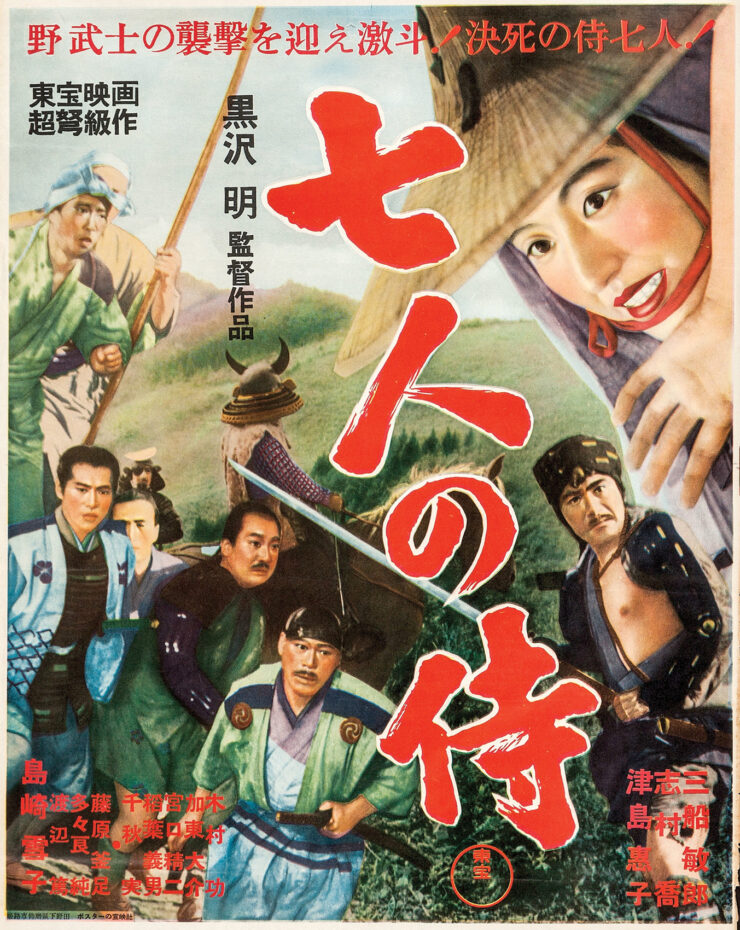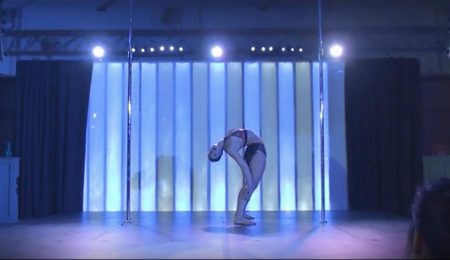Why it’s famous:
Considered director Akira Kurosawa’s hallmark picture, Seven Samurai centres on a group of ronin in feudal Japan who are tasked with defending a village full of farmers from roving bandits.
It was one of the first nationally and internationally acclaimed films made in post-war Japan, and spurred a whole new generation of Japanese filmmakers into the medium. Today, big name filmmakers like Scorsese, Tarantino, Herzog, and Iñárritu laud Seven Samurai for its incredible combination of plot, script, and cinematography.
Why you haven’t seen it:
While the film did receive a limited release in North American art house theatres, its audience was mainly limited to college students and serious film-goers.
The film’s initial release also suffered from post-war anxiety, due to the fact that it came out during a time when many Americans were still resentful towards their wartime enemy.
Why it might be tough to get through:
Like many films revered by old school cinephiles, Seven Samurai is long, clocking in at about three and a half hours. As such, it might be a good idea to watch it in two separate sittings to help you absorb the multifaceted narrative.
While the film’s visual style is groundbreaking, its black and white cinematography might make it difficult to stay with for such a long time. Plus, subtitles might be a turn off some first-time viewers.
Why you should see it anyway:
Seven Samurai contains all the hallmarks of an a true classic. The multifaceted plot may be long, but it gives Kurosawa enough time to explore several subplots in the film.
Kurosawa also pioneered new filmmaking techniques while making this picture, such as telephoto lenses and unorthodox camera angles, something that had not been explored by western filmmakers up until that point.
It is also unique in that it unashamedly depicts violence on camera. This was considered revolutionary at the a time when filmmakers, if they wanted to portray any graphic content, had to resort to coy suggestion in order to get past Hollywood censors.
The film also inspired a myriad of western imitators, including two Hollywood remakes called The Magnificent Seven (released in 1960 and 2016).
So, if you want to get a better in-depth look at the birth of the modern film industry, look no further than Seven Samurai.
Famous Quotes:
Kikuchiyo: Don’t mess with me. I may look like hell, but I’m a real samurai!
–
Kambei Shimada: This is the nature of war: by protecting others, you save yourselves. If you only think of yourself, you’ll only destroy yourself.
–
Kambei Shimada: Train yourself, distinguish yourself in war… but time flies. Before your dream materializes, you get gray hair. By that time your parents and friends are dead and gone.
Fun Facts:
Kurosawa was the first Japanese director to create profiles for his characters before shooting—outlining their personalities, their outfit changes throughout the film, their past histories, and their speaking habits.
Seven Samurai is known today as the first modern action movie. Kurosawa managed this by bringing common theatrical elements like slow motion and the hesitant hero trope together in one film.
Although Kurosawa is known for his samurai films throughout his almost-60-year career, Seven Samurai was his first official venture into this genre.
By the end of the 148-day shoot, Kurosawa quadrupled the movie’s budget, which almost bankrupted the production company, Toho Studios. As such, the project was shut down twice before completion.





